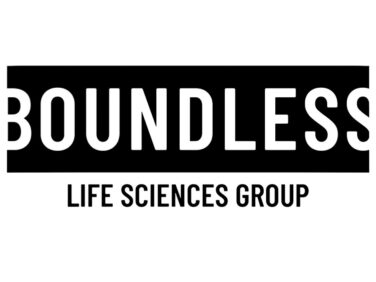Does communication in today’s healthcare universe bear the mark of a degenerative condition, or is it one that can be treated? According to Verilogue, a company that specializes in physician-patient interaction and dialogue, the “disease” of poor healthcare communications is serious and reveals some alarming statistics. In addition to the “By the Numbers” data, it has been found that 28% of first-time prescriptions are never filled.1
Fortunately, the greater healthcare community, including providers and marketers, can help to sustain wellness and manage sickness through a sharper focus on providing easy-to-understand educational pieces.
Finding Communication Opportunities
The path from initial awareness to filling a prescription to adhering to a treatment plan is an intricate one. First, people experience medical symptoms or become aware of a particular health condition. Then, they gather information, look for possible remedies on their own, learn about prescription alternatives, see a healthcare provider, get a prescription, fill it (hopefully), begin treatment, and (ideally) adhere to the regimen. This process, however, is not a nice linear progression. Instead it can be a winding road that requires continuous education and re-engagement. Some steps that stack the odds in favor of recovery are frequent, clear, and sometimes difficult conversations among physicians, hospitals, employers, pharma marketers, insurance companies, pharmacists, nutritionists, caregivers, and patients.
Understanding Communication Breakdowns
According to Jamison Barnett of Verilogue, communication breakdowns often show up when the patient is first told they have a serious condition. While the patient may be in “shock” hearing the unsettling news for the first time, the physician may have diagnosed this ailment hundreds of times. This scenario is likely to produce four communication breakdowns:
- The physician’s concept of disease differs from the patient’s.
- Doctors and patients have different agendas, i.e., MD: “I’m running behind.” vs. Patient: “Gee. Really? I have that?”
- Medical terminology doesn’t match the patient’s medical “vocabulary” along with other linguistic barriers.
- Patient involvement in the treatment plan has become ever more complicated as they consider costs (e.g., insurance plans and coverage), treatment options, and their time.1
Supporting Communication In The Pharmacy
If the patient is one of those statistics, he/she forgets most of the exam room conversation. After calling their loved ones, maybe they head toward the pharmacy wondering if someone there can explain their disease to them. They’re in luck. Today, pharmacies are a resource for educational materials of all kinds ranging from printed pieces like brochures to videos and apps. Pharmacy staff can help translate these materials, either literally (perhaps English to Spanish as an example) or figuratively, from medical terms to plain English.
Diana Blazek, an Indianapolis-area community pharmacist typical of many caring individuals in her profession, says, “I love to get out from behind the counter to help my regular customers. Eighty percent are repeat customers. They come back because they trust us.” Most pharmacists are eager to de-mystify the diagnosis and support treatment and behavioral elements that have the possibility of avoiding or reducing the severity of co-morbidities. “Sometimes,” Diana says, “it involves giving the patient a little “scary nudge” to encourage their compliance.”
On that note she says, “It’s good to have physical things, like printed materials that can be handed to the patient. Training and educational videos are offered by some of the manufacturers as well.” In addition to educating about conditions and medications, she adds, “Pharmaceutical companies should also focus on giving people the knowledge they need to understand what happens if they don’t take medications as prescribed.”
Mending Communication Fences
There are various points along the healthcare continuum where there are likely to be communication missteps. That’s why it’s important to think about and anticipate what the patient might be thinking and provide clear guidance along the way.
At the doctor’s office: It’s a fact of life: Physicians need to diagnose and move on, confident that the rest of their greater healthcare team will educate their patient and help them understand the severity of his/her condition, so they’ll do something about it. It might be a physician’s assistant who will say, “Mr. Smith, you need to take the doctor’s recommendations and prescribed medicines very seriously or your condition can worsen. Please let us help you.”
In the pharmacy: A pharmacist or other staff member may suggest, “Here, this video shows you how to use this device…” Everyone learns a little differently so healthcare providers and marketers need to consider these differences as they develop their educational materials.
For the patient: The patient needs to know “why” and “how” in terms they can understand. Moreover, a patient’s family member or other advocate should be educated as well. Diana Blazek likes it when family members come together to the pharmacy. Jamison Barnett says, “Illiteracy in healthcare can stem from language barriers, but also from age considerations (young and old), stress, and confusion. In our rush to help, sometimes we offer too much information and too many choices.” One way to handle this is to simplify.
Using Simple Language and Analogies
“But I don’t understand what I have,” the patient says. In this case, maybe the doctor can use an analogy, for example, likening a blood disease to dirty oil clogging up the pistons in a carburetor. Or she explains a drug that works “like a light switch.” And then, Diana the pharmacist continues the analogy. “You need your oil changed.” Or a pharmacy clinic’s nurse says, “This prescription works like electricity.” Hopefully, the light bulb in the patient’s mind clicks on.
For pharmaceutical marketers, we’ve found that something as simple as a format change can make all the difference in explaining symptoms, pointing out resources available, and delivering other important messages in the pharmacy’s aisles. In the hospital setting, healthcare personnel can reduce language and treatments to an understandable, accessible level for the patient and their advocates. Many hospitals offer free and low-cost health classes.
Help Patients Understand
Doctor and pharmacy visits can be productive and effective, especially if a patient feels comfortable asking questions. In fact, healthcare providers at any interaction point can invite patients to list their top few health concerns. Often those questions come right straight out of pharma marketers’ websites and printed material at the pharmacies.
Patients need to be enlightened, educated, and empowered. Dialogue models between physician-patient, insurer-patient, pharma marketer-patient, and all permutations can be augmented and enhanced, simplified and re-formatted to encourage and support patients, no matter where they might be on their path.
Overcoming Communication Deficits
To affect change, behavioral modifications need to take place at all levels. In today’s reality, doctors are challenged to observe, analyze, diagnose, listen, explain, and recommend treatment options in as few as 15 minutes. The rest of the healthcare team members support that valiant attempt by making sure that the 28% that bypass their prescriptions actually fill them. Maybe they even provide that just right “prod” that will lead to patients taking their prescribed dosages. In the end, effective healthcare communications is a group effort. It begins with awareness, education, and appropriate action. When healthcare teams and marketers work together to encourage patients to “take their medicine,” everyone benefits.
References:






